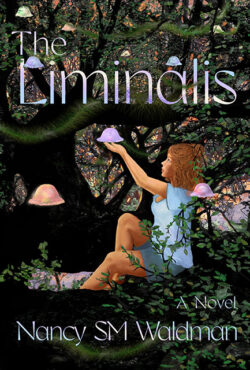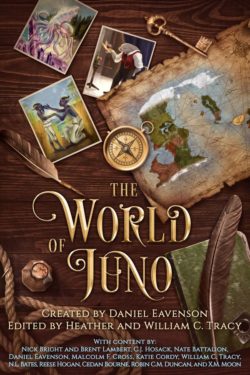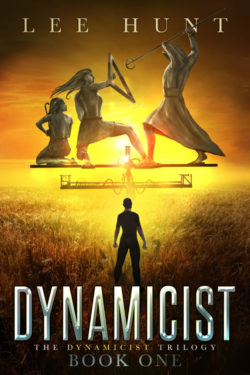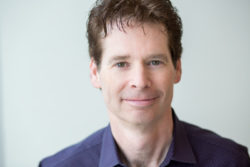The Dynamicist Trilogy Book Two
by
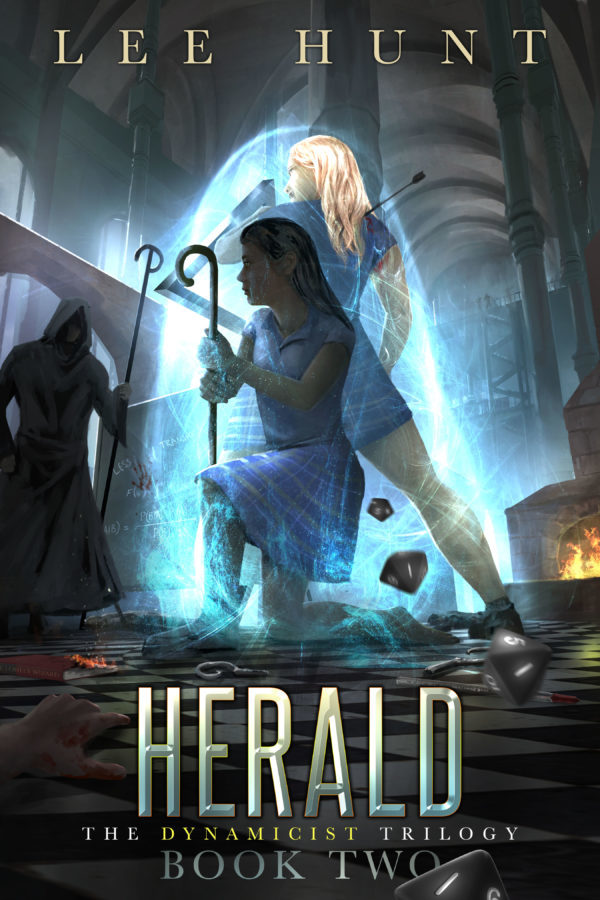
Robert thought becoming a dynamicist would enable him to change the world, starting with saving all his friends from being slaughtered. He was wrong.
- 1 Read list
Publisher: Independently Published
Editors:
Cover Artists:
Genres:
Tropes: Becoming a Monster, Farmer to Hero, Humanity is Dangerous
Word Count: 145,000
Setting: The World of Dynamicist
Languages Available: English
Series Type: Continuous / Same Characters
Tropes: Becoming a Monster, Farmer to Hero, Humanity is Dangerous
Word Count: 145,000
Setting: The World of Dynamicist
Languages Available: English
Series Type: Continuous / Same Characters
Wendy Ross on Amazon.com wrote:In this second installment of a trilogy, a talented student closes in on the villain of his prophetic dream but at great cost.
At the New School, in the bustling capital of Vercors, 18-year-old Robert Endicott trains to be a knight and a dynamicist. The latter involves manipulating energy with his mind to alter probabilities and perform what looks, superficially, like wizardry. Robert’s been preoccupied as of late with a “heraldic dream” that revealed a tall, cloaked figure murdering his friend Eloise Kyre and his lover, Koria Valcourt. He’s committed to thwarting this tragedy while learning to harness his talents at the Vercors Ice Company, home to a secret, off-campus training lab for dynamicists. The lab is safe, but because Robert can’t resist a woman in need, he helps seamstress Freyla Loche repair her “stitching engines” that were sabotaged. He later investigates a potential conspiracy of those loyal to the demon Nimrheal, who’d like to blame all of life’s ills on a new type of grain called “triticale.” When the cloaked figure does strike, Robert and his classmate Gregory Justice are well prepared, thanks to some covert work in a forge. But lives are lost in a grisly manner that references Robert’s favorite book, The Lonely Wizard. Mortal danger is much closer to Robert’s friends than he can guess. Hunt allows his dynamicist to flex his probability-altering muscles in this daring fantasy sequel. The students’ use of heat to change the outcome of thrown dice is a thrilling portrayal of magic. Later, theory is traded for battlefield action as “a sheet of electrons staggered downwards in the tiniest sliver of a second,” hurling lightning on the beastly skolves. And yet human affairs remain central to the narrative. Robert hears the complaints of those whom progress threatens to leave behind and realizes that “the scope and pace of change is...not a joke, and it is not just because people are crazy.” This has deep relevance to life in the early 21st century, and reaching out to readers is a noble endeavor. The finale brings chaos that will shape the next installment.
A bold fantasy sequel that delivers on the first volume’s call to action.
Booklife Reviews on Booklife Reviews wrote:wendy ross
5.0 out of 5 stars Cloaked Men, Grain, and Shorts - Questions Answered
Reviewed in Canada on September 19, 2020
Verified PurchaseIf you enjoyed Hunt’s first novel Dynamcist, then dive into the sequel Herald as it’s about to answers the lingering question: What’s up with the shorts? - the cliff-hanger shocking conclusion to the first novel. And what does math and dynamics have to do with baking a cake? – this question too is revealed with Hunt’s own unpredictable and charming delivery of wit and humour.
Herald reads like a second term for protagonist Robert Endicott and the students of the New School. The lessons in the mathematics of dynamics goes deeper into detail, moving to a secret location called the Bifrost as this group of eight cohorts are eventually called on to meet the stark realities of life and its consequences in the dark age they find themselves inhabiting. Now the stakes are higher as each student confronts their aspirations and fears and liabilities in the quest to become dynamicists. Will they succeed and come to know themselves before it is too late?
In this unfolding narrative the story of the Lonely Wizard continues and the mysterious cloaked figure reappears on campus. Could this be the fabled transcendental demon Nimrheal who punishes creativity and innovation? And Robert keeps having prophetic dreams that portend a future where his friends are murdered. How is a young student to solve this great struggle within and without?
Also it’s revealed that the New School is weaponizing agriculture by making the new wheat poisonous to the menacing skolves as a slow way of reclaiming lost territory. Is it safe for human consumption or are the protestors right?
In this neo-Medieval city-scape, Robert embraces the idea of “karios,” that he must be prepared for the exact moment for a critical decision or action. This urgency drives the plot forward and sculpts his character. Once again like the 24 hour test in Dynamicist, Sir Hemdale builds on this idea of karios with regard to knights in action: “There is a strength that comes when you act in unity with yourself. When you are not conflicted, when you act within your own integrity, you are at your best.”
And where did Robert find an abundance of this harmonious unity? Working in the forge with his grandpa. It’s has an echo of his time as a 3 year old child standing in oneness with the natural world at the slough. This seems to be where his mystical power, his “gift” and “strength,” emanated from:
“He remembered walking with his grandpa, working with him, and all the silent time that would pass before ideas found voice. …Lessons always followed silence and time spent. …Truth came forth only in the space of silences and the moments between actions,… Communication flowed of its own accord with patience and specific preparation.”It’s in this zen-like place of knowing one’s self, that certainty arises, and Hemdale says that out of this unity the qualities of integrity, right action, and ethics eventually align with the law.
Besides Herald just being a good read, these mystical and other existential questions unfold out of the content. Hunt muses more deeply on the necessity of fact finding a narrative, the nature of love, and echoes Jean-Paul Sartre quote that “hell is other people” when in the denouement of the battle Robert thinks “Who needs demons when we have human beings?” “Men were the real monsters.”
Fasten your seat belts in the final chapters of the tale, because Hunt is a master of sustaining battle description in all its fine details in the big, sustained climax to this second novel.
The searching, surprising second volume of Hunt’s Dynamicist Trilogy (after Dynamicist) finds the stakes higher, the pacing more assured, and Hunt’s challenges to the orthodoxies of fantasy storytelling more provocative. Favoring mathematics and thermometers over magic wands, Hunt’s students of “dynamics,” his world’s highly regulated wizardry, confront the mysteries introduced in the first book: What is the meaning of protagonist Robert Endicott’s “heraldic” dream? How can he prevent the mysterious cloaked figure who kills students from murdering his friends? And, just as pressingly, how can gifted, science-minded magicians help a riot-prone population that has been taught to fear all innovation?
Hunt’s not stingy with answers as his story widens in scope to include political conspiracy, a cult, and the threat of war. He renders scenes of action with crisp power, albeit with an overreliance on onomatopoeia such as “BRRRRAAAAA” and “CRRRACKKKKKKKKKKKKK,” and the action sequences are winningly varied. Readers will enjoy a tavern brawl, a fracas at an underground cult meeting, a confrontation with a legendary magician, and a desperate battle against monstrous “skolves,” in which Robert and his classmates must cooperate with everyday soldiers who are understandably skeptical of magic schoolboys.
The most memorable elements of the series remain Hunt’s philosophical provocations and his vividly detailed magical system. It’s a joy to see the characters dig into the study and theory of magic as well as the cultural consequences of its use. Engaging deeply with how heroes’ actions affect the lives of everyone else, this sequel finds Robert discovering the complex truths about why his world fears change. Even the cultists, he realizes, have their reasons. That richness occasionally comes at the cost of narrative momentum, especially in the first half, but the story picks up speed again for a climactic conclusion. This is an exciting, expansive, and ultimately satisfying exploration of the meaning of heroism, the economics of magic, and the role of innovation in society.
Takeaway: Readers looking for a thoughtful take on the wizard-school story will enjoy this mix of philosophy, mathematics, and action.
Great for fans of Lev Grossman’s Magicians trilogy, Elizabeth Bear’s Range of Ghosts.
Production grades
Cover: A-
Design and typography: A
Illustrations: -
Editing: B
Marketing copy: B+

